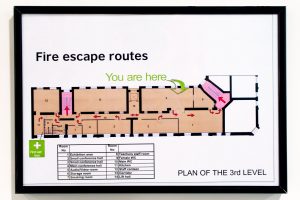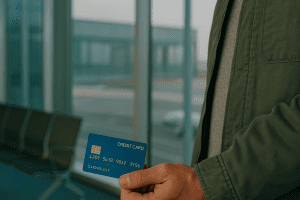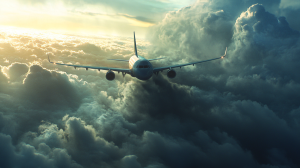Turbulence often feels like the scariest part of flying, but as a pilot with over 20 years of experience, I’m here to tell you: turbulence is completely normal and rarely dangerous. Understanding turbulence is the first step to overcoming any fears you may have when flying. I’ve often reminded my passengers who are nervous that I don’t want to die either. The knowledge we have today combined with the advanced technology found in airplanes puts us at an advantage to staying away from dangerous turbulence. In this blog, I’ll break down what turbulence is, why it happens, and how you can stay calm when the ride gets a little bumpy.
What is Turbulence?
Understanding turbulence is simple: Basically it’s a change in airflow that causes the aircraft to move slightly out of its smooth flight path. Think of it as hitting a pothole on a road trip—unexpected but manageable. Air is constantly in motion due to wind, weather systems, and even the terrain below. When an airplane passes through an area where the air is moving unpredictably, it creates the bumps you feel as turbulence.
Types of Turbulence You Might Encounter
1. Clear Air Turbulence (CAT): Often occurs at high altitudes and isn’t linked to weather you can see. It’s caused by differing wind speeds in the atmosphere.
2. Thermal Turbulence: This happens when warm air rises, usually during sunny days over land. Think of it like nature’s version of boiling water—bubbles of hot air create bumps.
3. Mechanical Turbulence: Caused by air flowing over mountains, buildings, or other obstructions on the ground.
4. Wake Turbulence: This is the result of another airplane’s passage, especially when following closely behind a large jet.
Why Turbulence Isn’t Dangerous
Here’s the key takeaway: planes are built to handle turbulence. Modern aircraft are designed to withstand far greater forces than you might imagine. As the video from Airbus demonstrates, wings are designed today to handle and enormous amount of stress. You will see towards the end of the video just how much those wings can bend under pressure. In addition to the design, pilots receive extensive training to navigate turbulence, and we’re in constant communication with air traffic control and other aircraft to find the smoothest routes.
When your seatbelt sign lights up, it’s not because the plane is in trouble—it’s just a precaution to keep you safe in your seat.
How to Stay Calm During Turbulence
1. Understand the Basics: Knowing that turbulence is a natural, non-threatening part of flying can help ease your mind.
2. Trust Your Crew: Pilots have access to advanced radar, weather reports, and years of training to guide the flight safely. Remember, they don’t want to die either!
3. Breathe and Distract Yourself: Deep breathing or focusing on a book, movie, or music can help reduce anxiety. Don’t focus on the turbulence but focus on something else.
4. Secure Yourself: Keep your seatbelt fastened when seated, even if the sign is off—it’s a simple way to stay safe.
5. Look to the Cabin Crew: Flight attendants are trained to handle turbulence and remain calm. If they’re not worried, you don’t need to be either.
Final Thoughts
Turbulence might be uncomfortable, but it’s not something to fear. By understanding turbulence and what it is, trusting the expertise of the pilots and crew will help you sit back and enjoy your journey. Every flight is a partnership between technology, training, and experience—all designed to bring you safely to your destination.
So the next time you feel the plane shake, remember: turbulence is just part of the adventure. Relax, buckle up, and let the skies take you where you’re headed.
The Nomad Pilot









